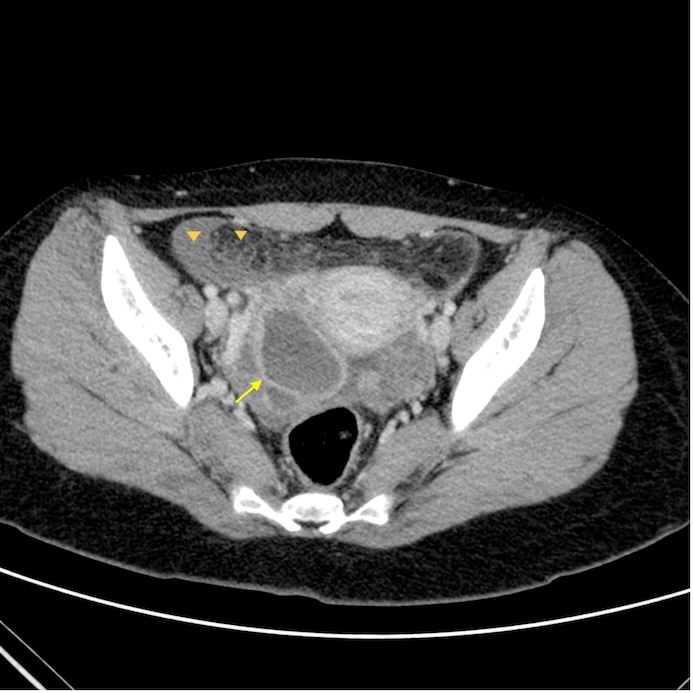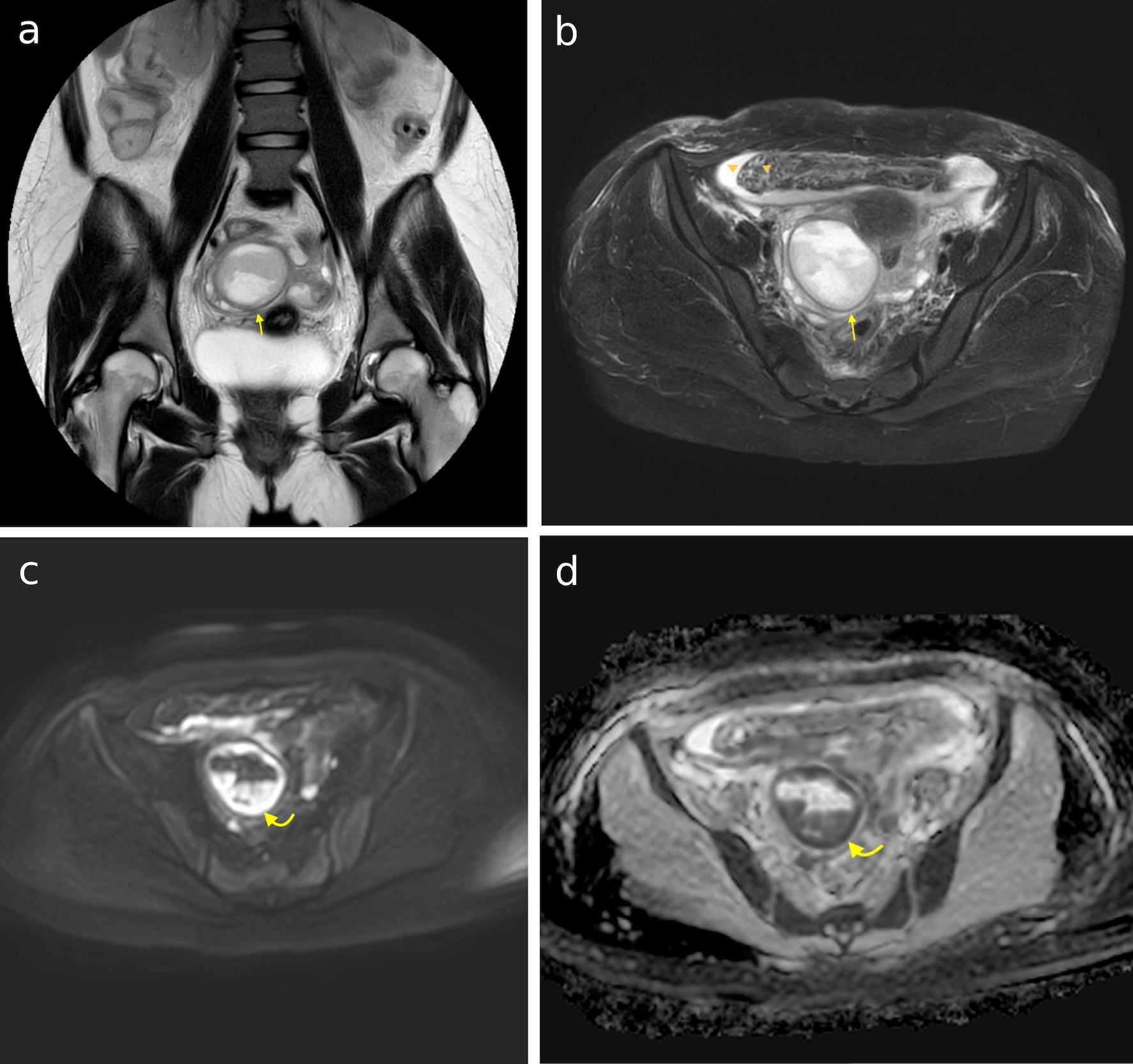
Figure 1. Axial post-contrast computed tomography (CT) scan of the abdomen shows a cystic lesion in the right adnexa (arrow) with a thick enhancing wall. Fat stranding and free fluid are also present (arrowheads).
| Journal of Clinical Gynecology and Obstetrics, ISSN 1927-1271 print, 1927-128X online, Open Access |
| Article copyright, the authors; Journal compilation copyright, J Clin Gynecol Obstet and Elmer Press Inc |
| Journal website https://jcgo.elmerpub.com |
Case Report
Volume 14, Number 2, June 2025, pages 64-68
A Tubo-Ovarian Abscess Caused by Salmonella enterica
Figures

